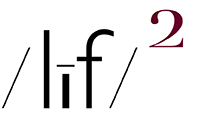(embiggenable) • iPhone
(embiggenable) • iPhone
(embiggenable) • iPhone
(embiggenable) • iPhone
AS I WAS RUMMAGING IN MY PICTURE LIBRARY I DISCOVERED that; 1. I have quite a number of pictures which were made due to “the light” and, 2. even though I have made a the light photo book, I have never made a the light gallery for my WORK page.
As I was organizing quite few (40 and more to come) of my the light pictures, it came to my awareness that many of those pictures where made with the 1.5mm (13mm equiv.) on my iPhone or, from the way-back machine, the 12mm lens (24mm equiv.) on my µ4/3 cameras. In the case of the 4 pictures in this entry, they all include doors and the exaggerated perspective of an ultra-wide angle lens. All of which leads me to the question …
….should I pursue the making of a complete body of work titled, a perspective (pun) on light and doors (or some such title)? And, if I were to do so, would it also be pictures that are about photography? That is, pictures which illustrate a specific visual characteristic intrinsic to the tools of the medium (as an example). A characteristic like narrow DOF or, as in this case, exaggerated perspective.
FYI, a thought about my use of “the light”….obviously, for me, “the light” is not the light that so many pictures makers salivate over, late day warm Hudson River School light. Rather, my “the light” is just ordinary, everyday sunlight which, when streaming through an opening-a door, a window, et al-creates a visual element which I use as an piece in the visual jigsaw-puzzle field created by / imposed by my framing. Or, in other words, the pictures I make that are instigated by “the light” are not about or defined by that light.
